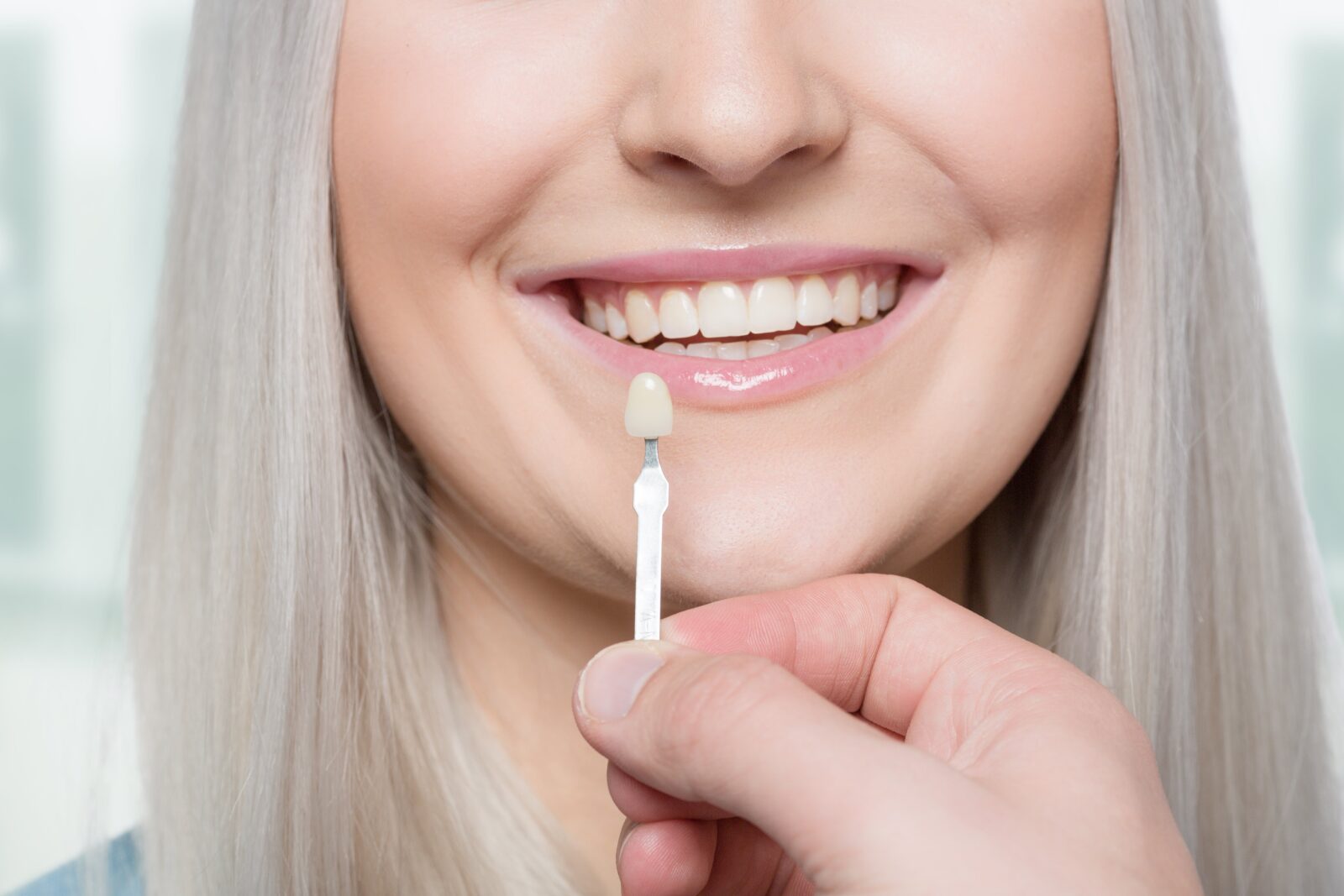Many people are looking for the perfect smile. They want to have straight teeth, but they don’t know how to get them. Two popular options for straightening crooked teeth are veneers and Clear Correct® orthodontic treatment. But, which is the best option for you: Veneers or Clear Correct®? To answer this question, it helps to understand what each of these treatments are. In this blog, we will compare Veneer vs. Clear Correct® so you can decide which treatment is best for your smile needs.
Veneers

Veneers are very thin, custom shells that are placed over the front side of teeth to change their color or shape. They are typically made out of porcelain, but they can also be made out of composite resin. Veneers can also be used for cosmetic reasons to cover up stains, damage, and chips. They can also be used to close gaps between the teeth and to address minor cases of crooked teeth. However, veneers are not ideal for severely crooked or misaligned teeth because it is not possible to place them properly.
To place veneers, your dentist will need to remove a small amount of enamel from your teeth. This is necessary so the veneers will fit properly and look natural. After your teeth have been prepared, then your dentist will take a dental impression of your mouth that is sent to a dental lab and used to custom fabricate your veneers. In about 1-2 weeks, you will then return to your local dental office so your dentist can bond the veneers to your teeth.
Veneer Pros:
- Very popular with many patients because they can improve the appearance of their smiles in about two appointments.
- They offer a quick and simple way to get a straighter smile.
- Can correct other cosmetic concerns, such as color or shape, at the same time.
- Porcelain is stain-resistant.
Veneer Cons:
- Only lasts for about 10-15 years, so it may require additional treatment after that time period is over.
- Not good for severely crooked teeth.
- Does not actually “fix” crooked teeth, rather veneers “conceal” them.
- Enamel modifications make veneers an irreversible treatment
Clear Correct®
Clear Correct® is a series of clear aligners that are used to straighten teeth over time through the use of gentle, constant force. It typically takes about 1-2 years for this treatment and involves wearing each aligner every day except when eating or brushing your teeth. You will start with the first set of aligners on the top and bottom set of teeth and use them for about two weeks before moving onto the next set of aligners. This process will continue until you have obtained the desired results.
Clear Correct® Pros:

- The process is completely transparent, so there are no visible parts during treatment. This makes Clear Correct® a great option if you want to straighten your teeth but do not want to have traditional braces.
- Clear Correct® can also be used to correct a wide variety of dental problems, such as gaps between the teeth, overlapping teeth, and crooked teeth.
- The aligners are removable so you can eat and drink what you want without having to worry about damaging your orthodontics. You can also take the aligners out to brush and floss your teeth.
- Once your teeth have been straightened, your results should last a lifetime provided you wear your retainer as directed.
Clear Correct® Cons:
- The Clear Correct® treatment is a longer process than veneers. It requires that you wear each set of clear plastic aligners for two weeks for about 1-2 years, whereas veneers can be completed in two dental appointments.
- Can cause slight discomfort as the teeth shift their positions.
- Only addresses crooked teeth, not color or shape of the teeth.
Veneers vs Clear Correct®: Which is Best?
Both veneers and Clear Correct® are great options for straightening your teeth, but each one has its own unique set of pros and cons. If you are looking for a quick and simple way to straighten your teeth, veneers may be the best option for you. However, if you want a more discreet orthodontic treatment or have a wide variety of dental problems that you would like corrected, Clear Correct® is likely a better choice. Talk to your dentist to see which treatment option may be best for you.
